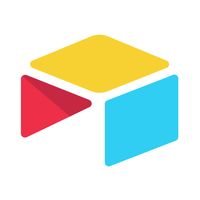Navigating the Digital Asset Management Landscape: A Guide to Free Templates
November 29, 2024, 12:05 pm

Location: United States, California, San Francisco
Employees: 501-1000
Founded date: 2013
Total raised: $1.35B

Location: United States, Washington, Bellevue
Employees: 1001-5000
Founded date: 2005
Total raised: $115.85M
In the fast-paced world of digital marketing and content creation, managing assets efficiently is crucial. Digital Asset Management (DAM) systems are the backbone of this process, ensuring that files are organized, accessible, and version-controlled. However, not every team needs a full-fledged DAM software. Sometimes, a simple template can do the trick. This article explores the best no-cost digital asset management templates available, helping you streamline your workflow without breaking the bank.
Imagine a library filled with books, but without a catalog. Chaos reigns. Digital assets—images, videos, documents—are no different. They need organization. A well-structured DAM system acts like a librarian, guiding users to the right files swiftly. It enhances collaboration, reduces time wasted searching for assets, and ensures everyone is on the same page.
Templates offer a low-barrier entry into the world of digital asset management. They provide a framework that can be customized to fit your specific needs. Many popular project management tools come with built-in templates that cater to digital asset management. Here’s a look at some of the best options available.
monday.com is a versatile project management tool that shines in digital asset management. Its free plan allows two users, making it ideal for small teams. The platform’s intuitive interface makes it easy to upload, categorize, and manage assets. You can tag team members, set task dependencies, and automate notifications. This template centralizes creative assets, ensuring that marketing and sales teams can find what they need without hassle.
For agencies juggling multiple clients, Wrike is a game-changer. Its free plan supports unlimited users, making it perfect for teams of any size. Wrike allows you to create folders for each client, with sub-folders for specific projects. The dynamic intake forms streamline requests, eliminating long email threads. This template is designed for scalability, ensuring that asset management remains efficient even as your client base grows.
Knack is a no-code app builder that offers flexibility for those transitioning from spreadsheets. While it doesn’t have a free plan, its 14-day trial allows you to explore its capabilities. Knack’s database-driven approach means you can organize assets by project, making retrieval straightforward. Custom tagging and versioning features enhance collaboration, although the interface may feel clunky compared to more established platforms.
Airtable combines the familiarity of spreadsheets with the power of databases. Its free plan accommodates up to five users, making it suitable for small teams. Airtable’s customizable templates are perfect for managing multiple brands or sub-brands. You can enforce brand standards while keeping everything organized. However, its complexity may overwhelm new users, requiring some time to customize effectively.
Stackby is a newer player in the DAM space, offering a free plan for individuals and small teams. Its user-friendly interface is reminiscent of Airtable, making it easy to set up and manage assets. Each asset can be categorized by various fields, allowing for efficient tracking. While its search capabilities may not be as advanced, it serves as a solid stepping stone for those transitioning from basic file-sharing solutions.
Softr stands out by allowing users to build interactive interfaces on top of existing data. This means your team can manage assets without altering the underlying structure. It’s perfect for creating custom workflows, but the learning curve can be steep. The free plan supports one app and up to ten users, making it a great starting point for teams looking to maintain control over their data.
For those who prefer traditional tools, Smartsheet offers free templates for Excel and Google Sheets. While not as collaborative as dedicated DAM systems, these templates provide a straightforward way to manage assets. They force users to think through their processes, ensuring that nothing is overlooked. The simplicity of spreadsheets can be a blessing for smaller teams or solo creators.
Selecting the right template depends on your team’s size, workflow, and specific needs. Start by identifying the key features you require. Do you need collaboration tools? Version control? Custom tagging? Once you have a clear picture, experiment with a few templates. Most platforms offer free trials or plans, allowing you to test their capabilities without commitment.
In the digital age, managing assets effectively is not just a luxury; it’s a necessity. The right template can transform chaos into order, enabling teams to focus on creativity rather than logistics. Whether you choose monday.com for its collaboration features, Wrike for its agency-friendly design, or Airtable for its advanced capabilities, there’s a solution out there for everyone. Embrace the power of templates and watch your digital asset management process flourish.
The Importance of Digital Asset Management
Imagine a library filled with books, but without a catalog. Chaos reigns. Digital assets—images, videos, documents—are no different. They need organization. A well-structured DAM system acts like a librarian, guiding users to the right files swiftly. It enhances collaboration, reduces time wasted searching for assets, and ensures everyone is on the same page.
The Template Advantage
Templates offer a low-barrier entry into the world of digital asset management. They provide a framework that can be customized to fit your specific needs. Many popular project management tools come with built-in templates that cater to digital asset management. Here’s a look at some of the best options available.
1. monday.com: The Collaborative Powerhouse
monday.com is a versatile project management tool that shines in digital asset management. Its free plan allows two users, making it ideal for small teams. The platform’s intuitive interface makes it easy to upload, categorize, and manage assets. You can tag team members, set task dependencies, and automate notifications. This template centralizes creative assets, ensuring that marketing and sales teams can find what they need without hassle.
2. Wrike: The Agency’s Best Friend
For agencies juggling multiple clients, Wrike is a game-changer. Its free plan supports unlimited users, making it perfect for teams of any size. Wrike allows you to create folders for each client, with sub-folders for specific projects. The dynamic intake forms streamline requests, eliminating long email threads. This template is designed for scalability, ensuring that asset management remains efficient even as your client base grows.
3. Knack: The No-Code Solution
Knack is a no-code app builder that offers flexibility for those transitioning from spreadsheets. While it doesn’t have a free plan, its 14-day trial allows you to explore its capabilities. Knack’s database-driven approach means you can organize assets by project, making retrieval straightforward. Custom tagging and versioning features enhance collaboration, although the interface may feel clunky compared to more established platforms.
4. Airtable: The Advanced Organizer
Airtable combines the familiarity of spreadsheets with the power of databases. Its free plan accommodates up to five users, making it suitable for small teams. Airtable’s customizable templates are perfect for managing multiple brands or sub-brands. You can enforce brand standards while keeping everything organized. However, its complexity may overwhelm new users, requiring some time to customize effectively.
5. Stackby: The Budget-Friendly Option
Stackby is a newer player in the DAM space, offering a free plan for individuals and small teams. Its user-friendly interface is reminiscent of Airtable, making it easy to set up and manage assets. Each asset can be categorized by various fields, allowing for efficient tracking. While its search capabilities may not be as advanced, it serves as a solid stepping stone for those transitioning from basic file-sharing solutions.
6. Softr: The User-Centric Interface
Softr stands out by allowing users to build interactive interfaces on top of existing data. This means your team can manage assets without altering the underlying structure. It’s perfect for creating custom workflows, but the learning curve can be steep. The free plan supports one app and up to ten users, making it a great starting point for teams looking to maintain control over their data.
7. Smartsheet: The Spreadsheet Alternative
For those who prefer traditional tools, Smartsheet offers free templates for Excel and Google Sheets. While not as collaborative as dedicated DAM systems, these templates provide a straightforward way to manage assets. They force users to think through their processes, ensuring that nothing is overlooked. The simplicity of spreadsheets can be a blessing for smaller teams or solo creators.
Choosing the Right Template
Selecting the right template depends on your team’s size, workflow, and specific needs. Start by identifying the key features you require. Do you need collaboration tools? Version control? Custom tagging? Once you have a clear picture, experiment with a few templates. Most platforms offer free trials or plans, allowing you to test their capabilities without commitment.
Conclusion: Streamlining Your Asset Management
In the digital age, managing assets effectively is not just a luxury; it’s a necessity. The right template can transform chaos into order, enabling teams to focus on creativity rather than logistics. Whether you choose monday.com for its collaboration features, Wrike for its agency-friendly design, or Airtable for its advanced capabilities, there’s a solution out there for everyone. Embrace the power of templates and watch your digital asset management process flourish.